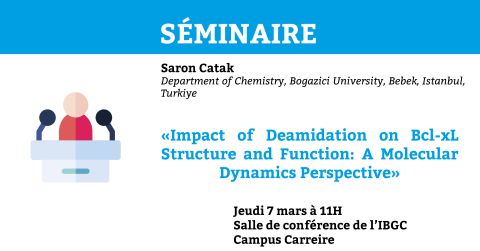Impact of Deamidation on Bcl-xL Structure and Function: A Molecular Dynamics Perspective
Deamidation is a non-enzymatic biochemical reaction that occurs spontaneously in peptides and proteins.1 Many reports show that changes accompanying deamidation have a substantial effect on protein structure, which dramatically affect protein function and stability.2 Deamidation is also believed to play a large role in the development of tumors.3 This project aims to explore the relationship between deamidation and disease by means of computational techniques. The protein of particular interest, Bcl-xL, is the dominant inhibitor of apoptosis. Notably, Bcl-xL undergoes post-translational modifications (PTMs) on its loop region (intrinsically disordered region-IDR), which is also the essential site for deamidation. Deamidation on the IDR of Bcl-xL induces loss of anti-apoptotic function, hence, is a pivotal switch that regulates its biological function. This transmembrane protein found in the mitochondria, plays a critical role in cancer development and resistance to treatment.3 Consequently, this mechanism could be one of the keys to unraveling –at the molecular level– the critical role Bcl-xL plays in cancer therapy resistance.4
Deamidation-induced conformational changes in Bcl-xL were explored to gain insight into its loss of function by performing molecular dynamics simulations.5 The outcomes of this study will provide a unique perspective on the underlying mechanism of Bcl-xL deamidation-induced cell death. Understanding the dynamics of the IDR and the structural changes upon its deamidation plays a crucial role in elucidating potential impacts of deamidation on the structure and function of Bcl-xL. This study aimed to computationally unravel the structural consequences of deamidation that lead to loss of Bcl-xL anti-apoptotic function at the atomic level. The outcomes of this project are expected to pave the way for future experimental and computational studies.
References:
1 Robinson, N. E., Robinson, A. B. Proc. Natl. Acad. Sci. USA 2001, 98, 944.
2 Weintraub, S.J. Deverman, B.E. Sci. STKE. 2007, 409, re7.
3 Takehara, T., Takahashi, H. Cancer Research 2003, 63, 3054.
4 Priault, M. Biochim. Biophys. Acta - Mol. Cell Res. 2017, 1864, 1734.
5 Catak, S. J. Chem. Inf. Model. 2022, 62, 1, 102.


